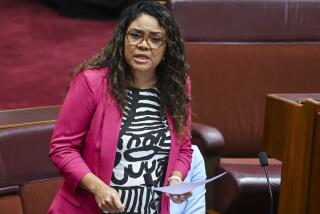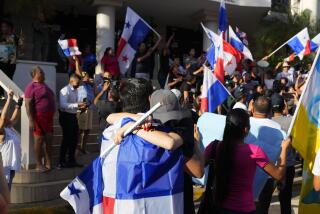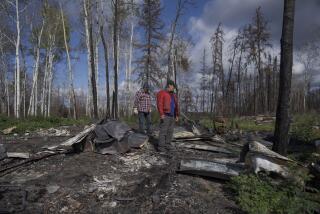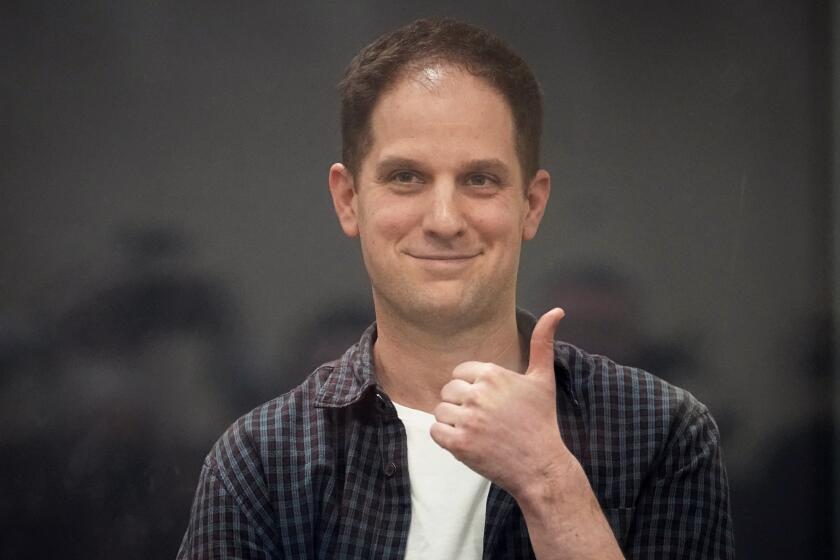Indigenous protests exposed tensions behind Canada’s tranquil image
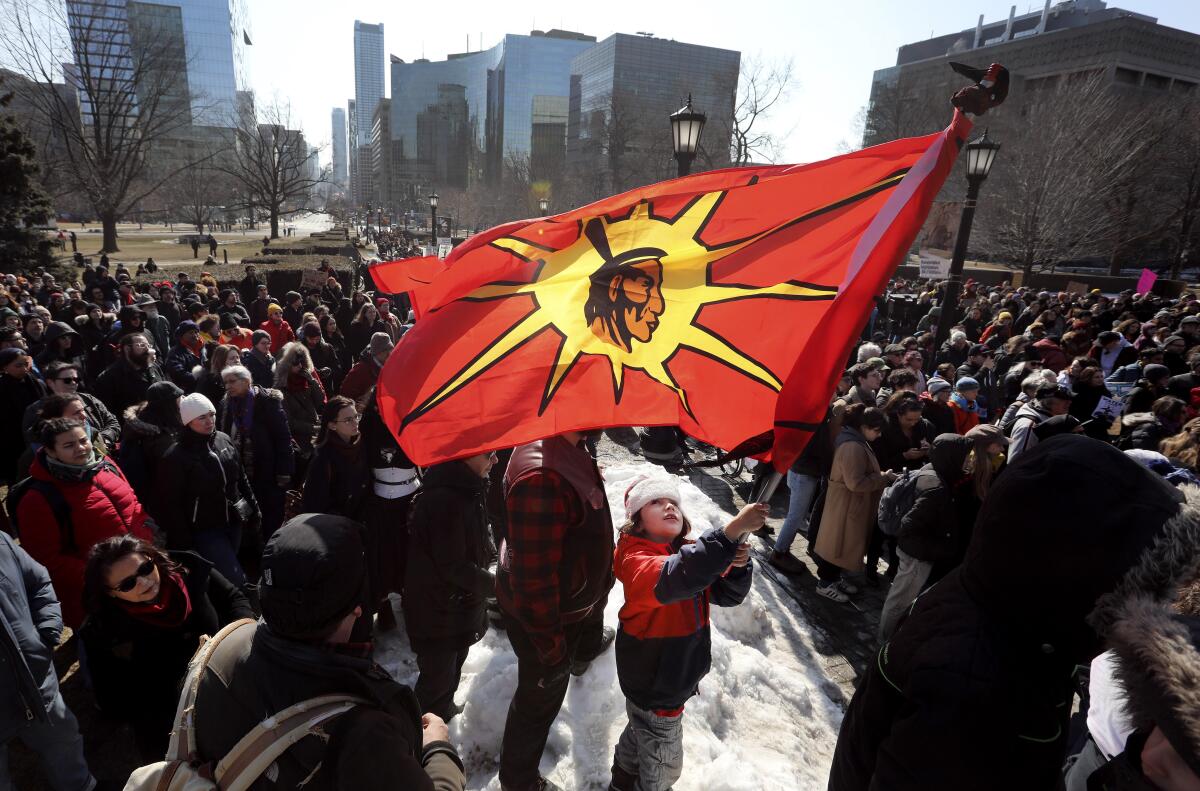
For weeks, indigenous Canadians blocked passenger and freight trains. They made it impossible to travel by rail from Montreal to Toronto. They disrupted the movement of grain, construction materials and propane gas in Western Canada. More than 1,000 rail employees were laid off. Food rotted. Calls for military intervention filled the air.
The target of their ire: a natural gas pipeline that would run 416 miles from northeastern British Columbia to the Pacific Coast.
This week, the Canadian Supreme Court declined to hear several appeals related to the Coastal GasLink pipeline, which would cut across traditional lands of the Wet’suwet’en community. The nation’s hereditary chiefs said they never approved the project and have objected to its potential impact on the land, the water and their community.
For now — following a tentative agreement, details of which remain murky — the blockades have come down. Trains are running again.
It appears that the pipeline project will go ahead, but the protests have severely tested Canada’s political system. They have exposed the contradictions in this vast nation’s relationship to its aboriginal people — a history that includes broken promises and treaties, wide disparities in education and healthcare, and decades of privations, abuses and insults.
The protests have also eroded Canada’s long-cultivated sense that it was a place of civility, civic accommodation and compromise.
That ethos dated to at least 1904, when Prime Minister Wilfrid Laurier told an audience at Toronto’s Massey Hall that “for the next 100 years, Canada shall be the star towards which all men who love progress and freedom shall come.” Lately, that star seems to have dimmed as Canada grapples with its past; fends off secession threats from Quebec and, more lately, Alberta; and struggles to balance regional and federal governmental powers.
“For long periods of time, Canada goes along in relative peace, and then there are occasional periods, maybe once in 10 years, when a confluence of forces make Canada look like a hard country to govern,” said Paul Thomas, a political scientist at the University of Manitoba. “We always think that at least we don’t have American divided government, but this has been a hard time, one of extreme events and destabilization, and it has tested Canada.”
The crisis demonstrated that modern Canada — with its trendy urban centers in Vancouver, Toronto and Montreal, its vast energy resources, and its shimmery international reputation as a trusted interlocutor and vanguard of peacekeeping — still faces strains and vital questions about its civic ideals, political identity and national character.
The questions begin with the nature of its political structure and the powers inherent in the office of the the prime minister.
In Canada, provincial leaders wield powers that national leaders might otherwise claim. This country in some respects resembles the United States before the Constitution, when, under the ill-fated Articles of Confederation, it had a weak executive and strong roles for the states. Canada’s provinces have powers that in many developed nations are conferred to the national government.
Just as the United States has experienced periods of weak presidential rule (during Reconstruction after the Civil War, for example) to periods of the imperial presidency (in the Nixon years, for example), Canada has experienced both with its leaders.
Pierre Elliott Trudeau, the father of the current Prime Minister Justin Trudeau, exercised enormous power, especially in the October Crisis of 1970, when he limited civil liberties following the bombing of mailboxes and the kidnapping and killing of Quebec’s deputy premier by the nationalist Quebec Liberation Front. In contrast, in the latest crisis, the younger Trudeau ruled out calling in the army, pleaded for patience, expressed outrage, described the situation as “unacceptable“ — and accomplished little.
If nothing else, the crisis underlined the younger Trudeau’s lack of power to compel the protesters to desist and underlined the limits of his office.
At the same time, the crisis focused attention on longstanding questions of the place of the indigenous in Canadian life and culture.
Though both the United States and Canada have trampled on treaties, mounted attacks on native people and suppressed the culture of the original settlers of the North American continent, these matters are of far greater visibility in Canada.
Bob Joseph’s 2018 examination of the Indian Act of 1876 — “21 Things You May Not Know About the Indian Act” — became a best-seller here, a notion inconceivable below the border; in its pages, he argues that “there was a foregone conclusion that Indians would simply die out, cease to exist, thereby absolving the government of any financial responsibility and giving clear access to the lands reserved for Indians.”
While these issues are seldom front-burner concerns in the United States, Canada a dozen years ago created a Truth and Reconciliation Commission to examine the relations between whites and Natives, especially the residential school system where Native children were taken away from their parents, abused and had their cultures sublimated.
The result of the Truth and Reconciliation Commission was a 94-point checklist of tasks to ameliorate the legacy of Canada’s treatment of indigenous people. Many of these tasks have not been addressed. And while Trudeau made justice for indigenous people a prominent part of his 2015 campaign, his unmet promises fueled the frustration of tribal activists and leaders — frustration that was stoked by plans to traverse the lands of the Wet’suwet’en indigenous band in northwestern British Columbia.
“As Wet’suwet’en, we are the land, and the land is ours,” Frank Alec, a chief who goes by his hereditary indigenous name Woos and who was speaking for eight such hereditary leaders, told reporters early this month in Smithers, British Columbia.
The recent crisis shined a searing light on divisions between Native activists, who fueled the controversy, and traditional tribal leaders, some of whom were skeptical of the strategy and tactics behind the protests. It was the Wet’suwet’en hereditary chiefs whose negotiations with government leaders began the long process of breaking the impasse that brought commerce and travel to a near-standstill in many parts of the country.
The crisis grew out of opposition to a natural gas pipeline project to cross the traditional territory of Wet’suwet’en and spawned broad protests against pipelines in general. Protesters blocked traffic in Kahnawake south of Montreal, marching with a banner proclaiming, “Protect our future. No more pipelines.”
The British Columbia pipeline swiftly became a proxy for broader grievances held by indigenous peoples, including generations-old resentment about the seizure of Native lands for Canadian railroads. It also focused attention on the next Canadian stress point: the role of energy in the country’s economy.
Canada is the world’s fifth-largest energy exporter. It provides more than 11% of the country’s gross domestic product, accounts for $10.5 million (U.S.) in government revenues and affects about 820,000 jobs in a nation of only about 38 million people, according to Natural Resources Canada, a federal agency. Some 60% of Canada’s energy production comes from oil, natural gas and coal.
As a result, energy policy is a major issue in a country where concern over global warming is far more prominent than it is in the U.S.. Environmental activists oppose pipelines out of fears of leaks and express continuing concern that greenhouse gas emissions result from the extraction of the Alberta oil sands.
Trudeau spent $3.45 billion to purchase Kinder Morgan’s Trans Mountain pipeline and then approved its expansion, a move that failed to mollify his critics in Alberta even as it outraged his putative environmental supporters. Last month, Teck Resources canceled its Frontier project in northern Alberta, which its supporters said would produce more crude than the African nation of Gabon, a major exporter. These two actions raise questions about the future of the energy business in a country where that sector accounted for about a quarter of total exports in 2018. Some 89% of Canada’s energy product exports went to the United States.
For now, rail transport, commerce and pipeline construction have returned to normal. But the episode has displayed the frays in Canada’s sense of normalcy. This conflict may be close to being settled, but the country is left with the unsettling feeling that more conflict lies ahead.
Shribman is a special correspondent.
More to Read
Start your day right
Sign up for Essential California for news, features and recommendations from the L.A. Times and beyond in your inbox six days a week.
You may occasionally receive promotional content from the Los Angeles Times.
